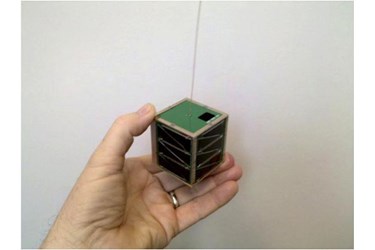Nanosatellite & Microsatellite market to be worth $6.1bn by 2026

New research published by Polaris Market Research suggests that the global nanosatellite and microsatellite market is expected to be worth over $6bn by 2026.
Nano satellites are used in civil, government, defence, and commercial sectors for earth observation and telecommunication applications, while organisations are increasingly adopting nano and micro satellites for technology demonstration, and scientific research and experimentation.
The growing commercial sector, along with low costs associated with these satellites, is driving the market and there has been a rising demand for earth observation services among various sectors such as agriculture, energy, civil engineering, oil and gas, and defence.
Growing use of these satellites in defence is expected to boost the growth of this market.
In terms of technological advancement the miniaturisation of components, and associated software, has encouraged established organisations, and small and medium enterprises to invest in these satellites. Advancements in microelectronics such as light weight apertures, antennas, panels, transreceivers, control sensors and actuators, and multi spectral imagers have helped to increase the efficiency and processing power of these satellites and make it easier to assemble and test, reducing the complexities associated with heavy satellites.
Cubesat technology is growing at a rapid rate, according to the research. CubeSats are a class of research spacecraft called nanosatellites. Cubesats are miniaturised satellites with mass between 1-3 kg. CubeSats are developed to standard dimensions (Units or “U”) of 10x10x11 and can be 1U, 2U, 3U, or 6U in size, and typically weigh less than 1.33 kg (3 lbs) per U.
CubeSats are widely used by academia and research, and are forecast to constitute around 30% of the total nano satellite market during the forecast period.
Nano satellites in the range of 4-6 kg are expected to constitute around 60% of the nano-satellite market during the forecast period owing to its increasing applications in remote sensing, earth observation, and technology development.
The adoption of nano and micro satellites in the commercial sector has increased tremendously over the past few years owing to miniaturization of bulky satellite components, reduced costs, and standardisation of satellite parts.
In the commercial sector, these satellites are used in forestry, agriculture, energy, civil engineering, archaeology, insurance, and media and entertainment among others.
These satellites are used for obtaining high-resolution earth imaging, space-based internet, and communication services.
The various applications of nanosatellites and microsatellites include earth observation, communication, technology demonstration, biological experimentation, scientific research & academic training, and others.
With over 2100 satellites anticipated to be launched from 2016 to 2025 an emerging application of these satellites is near real-time remote sensing.
Near-real time satellite imagery would enable monitoring of assets at the same time for global corporations, and would generate high-resolution visual data for individual companies, and governments. Increasing demand of on-demand geographic information systems with pay-per-image business model is expected to supplement the growth of this market.